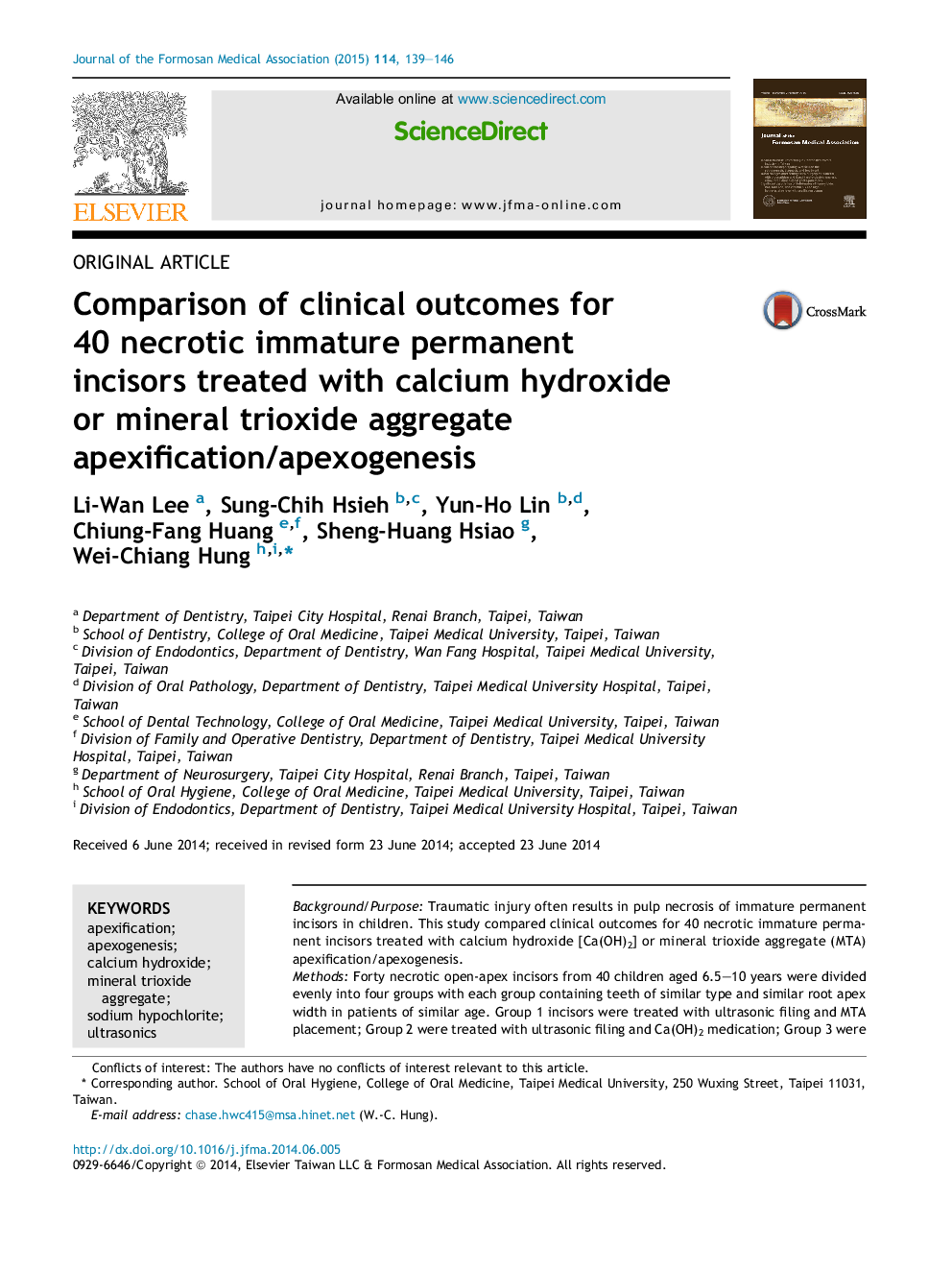| Article ID | Journal | Published Year | Pages | File Type |
|---|---|---|---|---|
| 3478472 | Journal of the Formosan Medical Association | 2015 | 8 Pages |
Background/PurposeTraumatic injury often results in pulp necrosis of immature permanent incisors in children. This study compared clinical outcomes for 40 necrotic immature permanent incisors treated with calcium hydroxide [Ca(OH)2] or mineral trioxide aggregate (MTA) apexification/apexogenesis.MethodsForty necrotic open-apex incisors from 40 children aged 6.5–10 years were divided evenly into four groups with each group containing teeth of similar type and similar root apex width in patients of similar age. Group 1 incisors were treated with ultrasonic filing and MTA placement; Group 2 were treated with ultrasonic filing and Ca(OH)2 medication; Group 3 were treated with hand filing and MTA placement; and Group 4 were treated with hand filing and Ca(OH)2 medication.ResultsGroup 1 incisors needed the shortest mean duration (5.4 ± 1.1 weeks) for apical hard tissue barrier formation, followed by Group 3 incisors (7.8 ± 1.8 weeks), Group 2 incisors (11.3 ± 1.3 weeks), and Group 4 incisors (13.1 ± 1.5 weeks). Group 1 incisors had a significantly shorter mean elongated root length (2.1 ± 0.2 mm) after treatment than Group 2 incisors (3.5 ± 0.3 mm, p < 0.001), and Group 3 incisors had a significantly shorter mean elongated root length (2.1 ± 0.1 mm) after treatment than Group 4 incisors (3.7 ± 0.3 mm, p < 0.001).ConclusionNecrotic open-apex incisors treated with ultrasonic filing plus MTA placement need the shortest mean duration for apical hard tissue barrier formation. For elongation of apical root length, Ca(OH)2 apexification/apexogenesis is better than MTA apexification/apexogenesis, regardless if either ultrasonic or hand filing are used.
